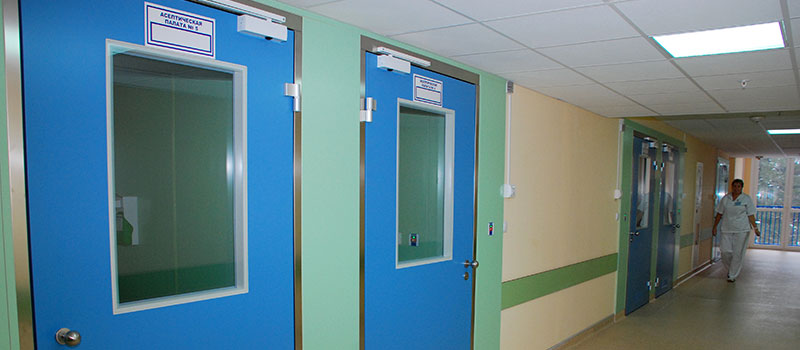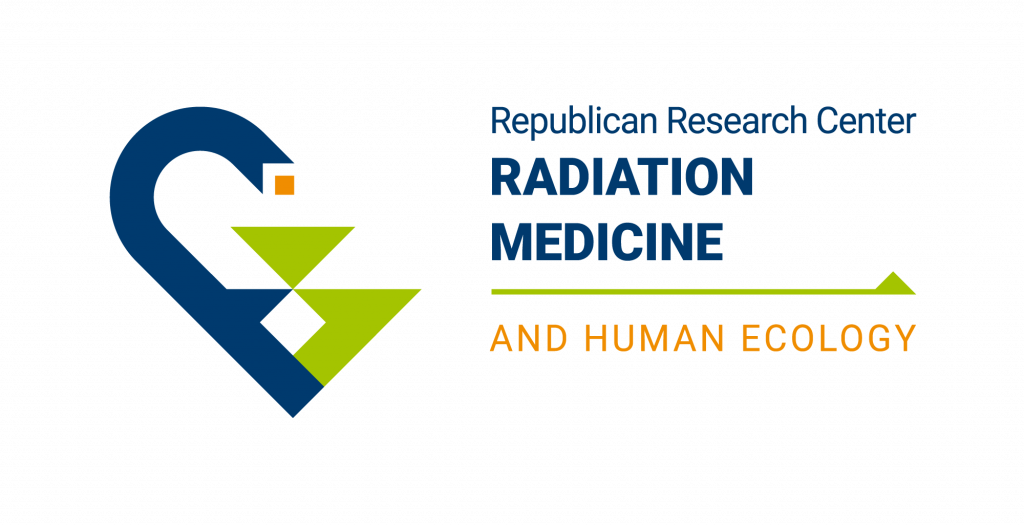Hematology for adults
Hematology is a branch of medicine that studies the structure and functions of the blood system and hematopoietic organs, the causes and mechanisms of blood disease development, using various methods for their diagnosis, treatment and prevention.
Blood diseases are conditionally divided into non-malignant and malignant (oncohematology).
- anemia of various nature
- diseases of leukocytes and platelets
- hemorrhagic diseases
Malignant blood diseases or hemoblastoses include:
- acute leukemias
- chronic myeloid leukemia
- lymphomas
- histiocytosis
The hematological team of the Center is represented by the pediatric and adult hematologists in the therapeutic outpatient department and inpatient hematology department for children (for 30 beds) and for adults (for 60 beds), as well as 10 beds in the adult department are open for the treatment of patients with acute leukemia in aseptic wards, which allows the use of modern chemotherapy programs, including expensive and highly effective drugs.
The center offers first-class medical equipment, a modern clinical diagnostic laboratory, a highly qualified staff of hematologists who will help to identify the cause and successfully treat blood diseases in the shortest possible time.
The staff of the department have many years of experience in treating the patients suffering from hematological diseases, they apply international protocols for the diagnosis and chemotherapy of oncohematological diseases.
- antitumor therapy and replacement therapy with blood components in the treatment of diseases of the blood system, using the latest techniques
- computed tomography
- ultrasound and endoscopic examinations
- various types of biopsies
- test of blood smears, bone marrow, imprints of lymph nodes, other organs, histological specimen
- study of humoral and cellular immunity, hemostasis
- cytochemical and cytogenetic studies
Aseptic wards
The hematology department for adults includes 5 special ward-boxes with ventilation designed with HEPA filters and laminar air flow, a special antibacterial / antifungal wall coating, and a door lock. This makes it possible to treat patients with agranulocytosis and secondary immunodeficiency after intensive courses of chemotherapy (including high-dose ones).

Multiple myeloma
The most common symptoms are:
- bone pain
- pathological fractures in particular, compression fractures of the spine (as a result of which the height of patients sometimes decreases)
- foci of destruction in flat bones
Often, such patients are treated for a long time and unsuccessfully by neurologists for radicular pain. One of the symptoms of kidney damage in multiple myeloma is the presence of protein in the urine and increasing renal failure. In blood tests, a characteristic symptom is an increase in ESR. Chemotherapy is the major treatment for multiple myeloma.
Multiple Myeloma can be determined after primary diagnostic check-up. This check-up includes:
- consultation of hematologist
- bone marrow puncture
- myelogram (morphology study and counting the number of tumor cells)
- immunophenotyping of tumor cells (determination of the type of myeloma cells using monoclonal antibodies)
- complete blood cell count
- biochemical analysis of blood and urine
- x-ray of the skull and flat bones of the skeleton to exclude foci of destruction
Our Center uses meets strict standards and recognizes the most modern methods of diagnosis and treatment of multiple myeloma. In most cases, 1-2 days of hospital stay is sufficient for a sternal puncture and a complete hematological examination with verification of the type of oncohematological disease.
|
Diagnostics and treatment (estimated prices) |
|
| Procedure | US Dollars |
| Stay at inpatient department (for 1 day including meal) | ~ 35 |
| Diagnostic check-up for myeloma | from 190 |
Acute Leukemia
Acute leukemia is a rapidly progressing cancerous tumor in which pathologically altered tumor blood cells affect the bone marrow and the body as a whole. There are several types of acute leukemia. They are more common in adult patients.
Symptoms of acute leukemia may include:- increased body temperature
- general weakness and other flu-like symptoms
- swollen lymph nodes
- enlargement of the spleen and liver
- bone pain
- bruising on the skin
- nasal, uterine bleeding
Acute leukemia usually occurs suddenly. At first it may seem that it is a cold or a sore throat, but the symptoms progress rapidly, the condition worsens and pathological changes appear in the blood. Acute leukemia is a dangerous disease. If left untreated, the disease progresses rapidly and is fatal. There are no special preventive measures.
What should you do?If you suspect leukemia you need to see a doctor as soon as possible. Diagnosis and treatment is best performed by a hematologist experienced in treating these patients. The duration of treatment for leukemia is usually 2 years. The sooner treatment is started, the higher the chance of recovery.
Diagnosis and treatmentThe diagnosis of acute leukemia is established by the results of bone marrow puncture. The main method of treatment is chemotherapy. The most frequent and formidable complication of chemotherapy are infections, which often lead to death.
In our Center, all patients with the onset of acute leukemia receive chemotherapy in a special department equipped with sterile wards, which significantly reduces the risk of infectious complications.
- consultation of a hematologist
- bone marrow puncture
- myelogram (morphology study and counting the number of blast cells)
- immunophenotyping of blast cells (determination of the type of leukemic cells using monoclonal antibodies) If necessary, molecular biological study of BM by PCR:
- detection of rearrangements BCR-ABL P190,210, t(9;22)
- detection of AML1-ETO rearrangements, t(8;21)
- detection of CBFB-MYH11A,D and E rearrangements, inv 16
- detection of rearrangements PML-RARA, t(15;17)
- cytogenetic study of BM (determination of the Ph chromosome).
For a sternal puncture and a complete hematological examination with verification of the type of oncohematological disease, in most cases, 1-2 days of hospital stay is sufficient.
|
Diagnostics and treatment (estimated prices) |
|
| Procedure | US Dollars |
| The course of induction or consolidation therapy for acute myeloid leukemia -7 days (cheme 7+3) | Up to 5 000 |
| Diagnostic check-up for acute leukemia | from 200 |
| Stay at inpatient department (for 1 day including meal) | ~ 35 |
Chronic leukemia
Chronic leukemia is a type of blood tumor that develops slowly, the duration of the disease can be up to 15 years. In chronic lymphocytic leukemia, the lymphoid blood sprout is affected, the number of lymphocytes in the bone marrow and peripheral blood increases, and over time, the lymph nodes and parenchymal organs are affected. In chronic myeloid leukemia, the myeloid blood sprout is affected, which leads to changes in blood tests, an increase in platelets, and immunodeficiency.
All patients with chronic leukemia are sensentive to frequent infectious diseases, but chemotherapy is not always necessary for chronic lymphocytic leukemia. Often, patients are observed for a long time by hematologists before chemotherapy is prescribed.
The treatment of chronic myeloid leukemia has recently been successfully carried out both with the use of chemotherapy and with the use of bone marrow transplantation.
In our Center you can undergo a complete check-up to exclude chronic leukemia, get recommendations for treatment and, if necessary, undergo chemotherapy.
To establish the type of chronic leukemia, it is necessary to undergo a primary diagnostic check-up. The check-up includes:- consultation of a hematologist
- bone marrow puncture
- yelogram (morphology study and counting the number of blast cells)
- immunophenotyping of blast cells (determination of the type of leukemic cells using monoclonal antibodies)
If necessary, we perform molecular biological study of BM by PCR, cytogenetic study of BM (determination of the Ph chromosome).
|
Diagnostics and treatment (estimated prices) |
|
| Procedure | US Dollars |
| Diagnostic check-up for chronic leukemia | from 200 |
| Stay at inpatient department (for 1 day including meal) | ~ 35 |
Our specialists:
Dmitry Novik, hematologist (Head of the department), the highest category, 25 years of work experience.
Zhanna Kozich, hematologist, PhD, associate professor, the highest category, 31 years of work experience.
Elena Repchenko, hematologist, the highest category, 31 years of work experience.
Victor Shpudeiko, hematologist, the highest category, 25 years of work experience.
Natalya Kovzik, hematologist, the highest category, 15 years of work experience.
Dmitry Kravchenko, hematologist, PhD, the highest category, 10 years of work experience..
Stanislav Kuznetsov, hematologist, first category.
Viktor Koshkevich, hematologist, first category.
Aigul Rakhymova, hematologist.
